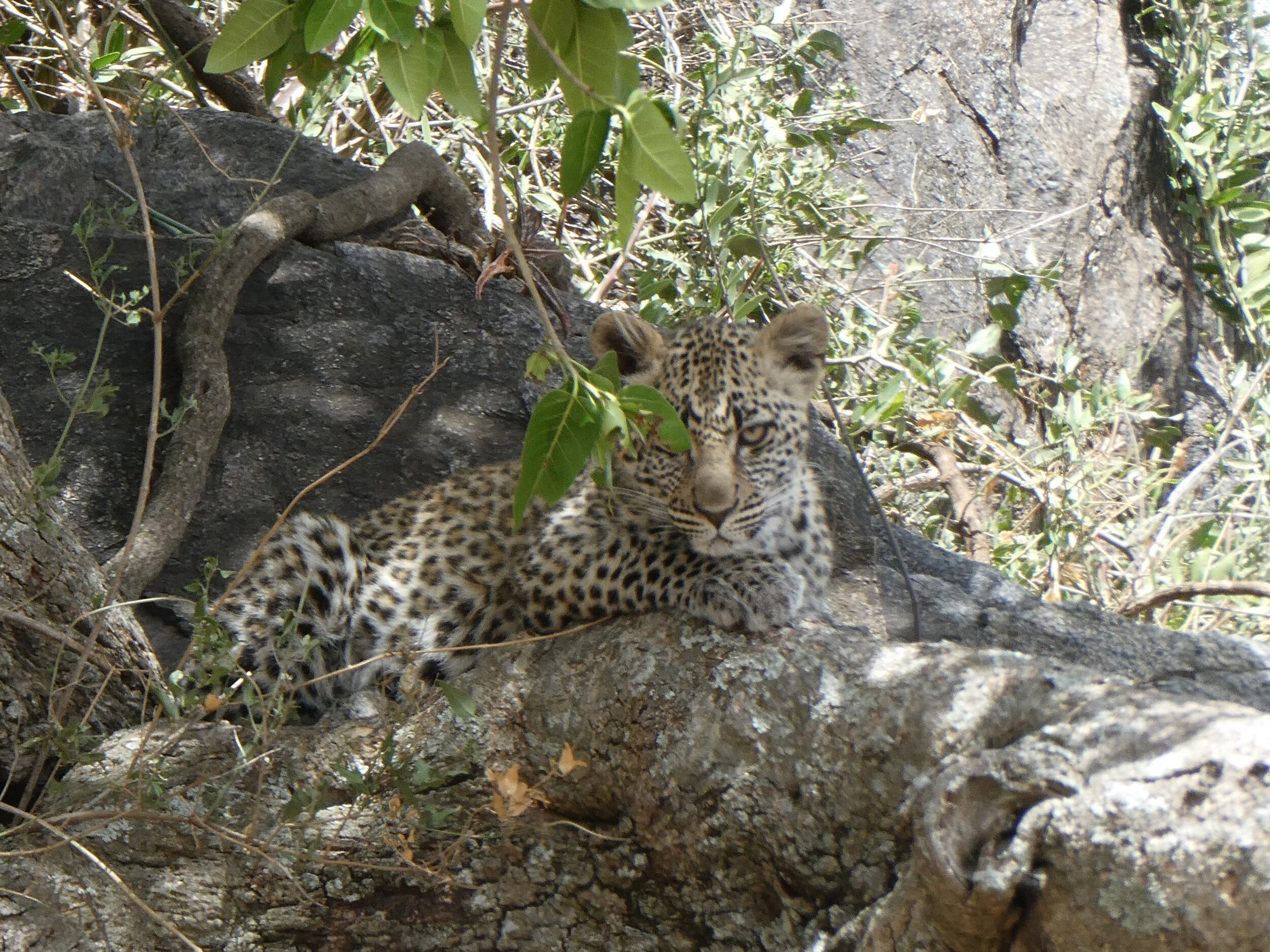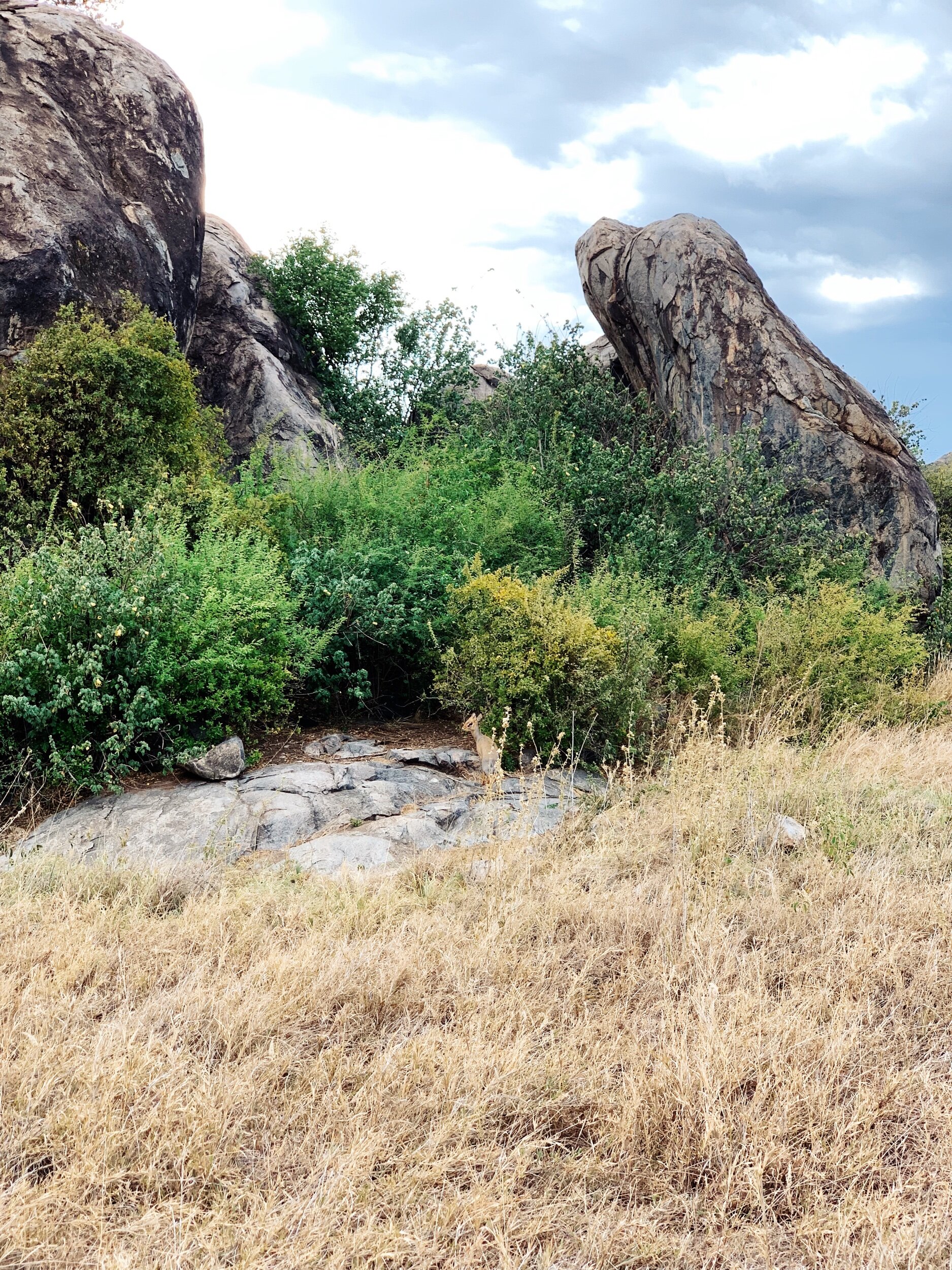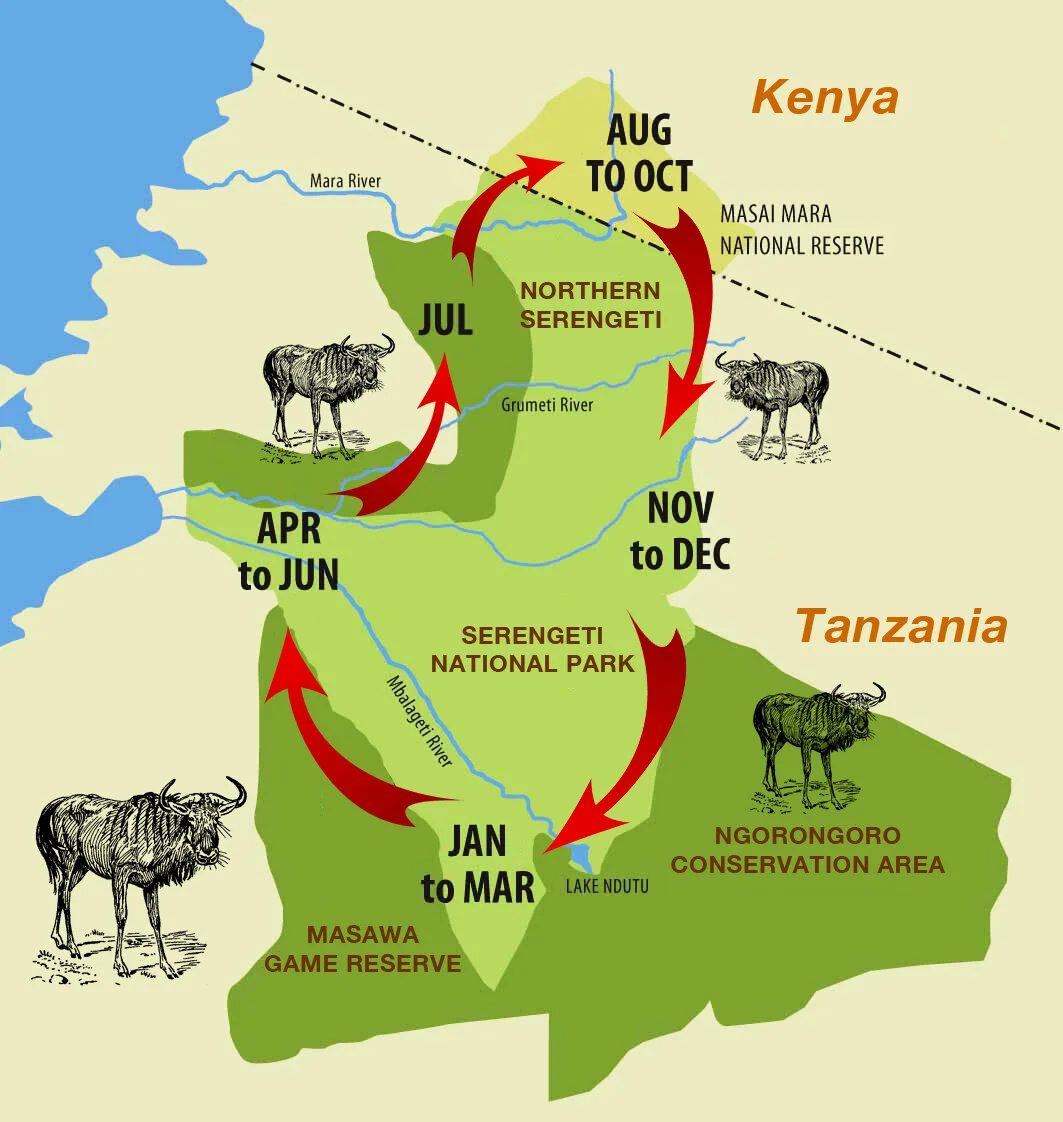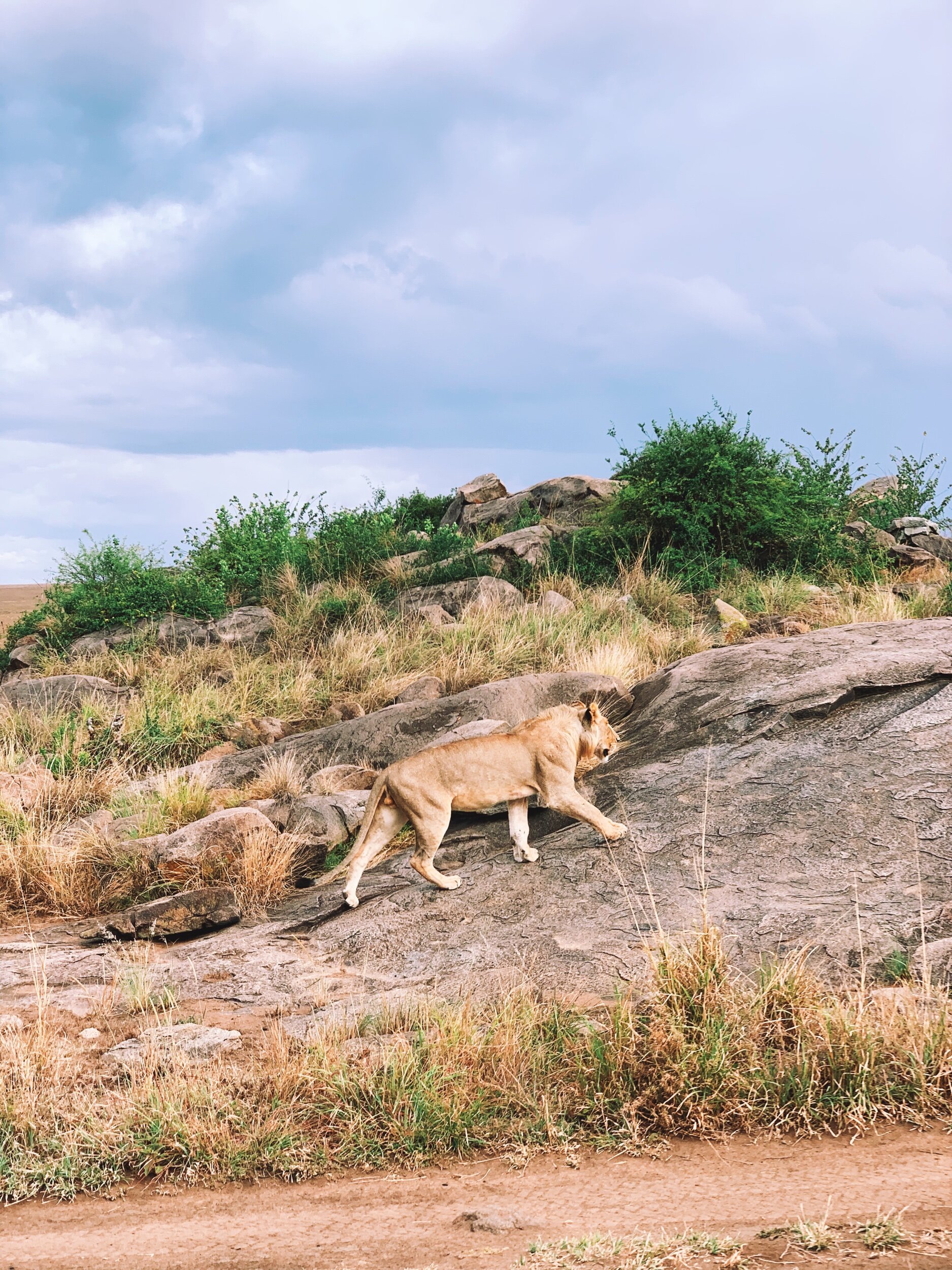Our very first safari in Tanzania
When you say “safari” most people immediately think “South Africa”, or “Kenya” and not necessarily “Tanzania” despite the fact this country has probably some of the most finest national parks in Africa. And if we had not climb Kilimanjaro we would have probably never gone to Tanzania for a safari which would have been a real shame! Indeed we decided to extend our trip after climbing Kilimanjaro and we are so glad we did. Since our safari was an « add-on » to what was already going to be an amazing trip we didn’t ask ourselves too many questions and didn’t really know what to expect. Looking back we wanted to share a few take-outs from our experience on a safari in Tanzania as well as a few things we wished we knew before embarking on a safari.
We travelled to Tanzania in October 2019. The weather was not perfect to climb Kilimanjaro see our article here about this topic but from a safari perspective we got pretty lucky as it only rained once during our 5 days safari.
A few info on Tanzania:
Tanzania is not only the country with the highest mountain in Africa and the highest single free-standing mountain in the world, Kilimanjaro but also home to some of Africa’s most famous parks. Just off Tanzania’s coast lies Zanzibar, beautiful beaches lined with palm trees and turquoise waters… Over 100 different languages are spoken in Tanzania, making it the most linguistically diverse country in East Africa. Our guide gave us a lot of information about the country but we recommend reading more about the history of Tanzania (the name comes from a blend of Tanganyika and Zanzibar). On 26 April 1964, Tanganyika united with Zanzibar to form the United Republic of Tanganyika and Zanzibar. The country was renamed the United Republic of Tanzania on 29 October of that year. Under the terms of this union, the Zanzibar Government retains considerable local autonomy. Read more about Tanzania history.
Our first stop was Lake Manyara National Park - a shallow alkaline lake at an altitude of 960m formed in a depression in the Rift Valley System. It’s a smaller park from the other but vegetation is diverse, ranging from savannah to marsh to evergreen forest which makes it quite interesting. This was our first encounter with baboons (who are very curious!) and elephants. The excitement was pretty high. We would literally jump left right with our binoculars to see what would come next. We also saw some buffalos, hippos and a few other birds and wild animals. The lake was pretty dry when we went and we didn’t see many flamingos or any tree lions. Overall it was a great first day of our safari, slowly building up to the next park… We stayed at Kudu Lodge and we loved it. I guess coming from the Kilimanjaro climb, anything with a bit of comfort was really welcomed! It’s worth noting this park is close distance to Arusha and could be a great day trip.
Baboons
The drive to Serengeti from Lake Manyara was pretty long and bumpy! But it’s totally worth it… First you can do a little stop at the view point of Ngorongoro Crater which is really stunning and gives you a feel for the grandeur. You can see wildebeest herds from far. The scenery is also very different. But first let’s head to the Serengeti.
You know when you are in Serengeti National Park as there is a huge gate and the landscape is very different! It’s basically flat. Serengeti is derived from the Maasai language, Maa; specifically, "Serengit" meaning "Endless Plains"… It is located in northern Tanzania and spans approximately 30,000 km2!!! It’s huge and there is no way you can do it all in 3 days or a week… It’s one of the ten natural travel wonders of the world and was definitely our favourite park. We saw so many lions there as well as cheetahs and leopards, giraffes, hippos, vultures, hyenas, elephants... It was incredible moment which we will remember forever.
Aww my heart melted when we saw these cubs
Hippo out of the water in Serengeti
The king having lunch
Seeing lions for the first time (especially cubs) was pure happiness. They are so cute. During the day they are not easy to spot however as it’s hot and they sleep… If you spot a tree or a water point you can be sure they are hiding there.
Giraffe in Serengeti, endless plains
Leopard
Leopards were hiding in what we called kopjes which stick out majestically from the surrounding flat grassland. The soils of the Serengeti consist of volcanic rock and ash. Below it you’ll find an even older layer of metamorphic rock. Researchers say that in the late Precambrian era a lot of magma leaked out of the earth’s crust where it settled and cooled to form giant granite and gneiss layers. As time went on – we are talking millions of years – the softer and surface rocks eroded and the granite formations were revealed to produce what we see as kopjes today. Serengeti is the best place to see kopjes and some of the oldest kopjes in the Serengeti are up to 550 million years old! (source: Tanzania Experience) They look very distinct and add a dimension to the landscape.
Cheetahs
Baby leopard hidden in a tree
Kopjes, also known as inselbergs (island mountains) which are where you should look out for lions and cheetahs.
A giraffe browsing on the leaves of an acacia tree in Serengeti
We also managed to experience a lion hunting a zebra. You could see a zebra alone and looking left and right super worried. That’s at the moment we realised a lion would be nearby and bingo here it was coming for a lunch! We were in full excitement in the car.
Tanzania is also home to some of the oldest hominid settlements unearthed by archaeologists. During our drive we stopped at Olduvai Gorge, a site that holds the earliest evidence of the existence of human ancestors. It is a steep-sided ravine in the Great Rift Valley, which stretches along eastern Africa. Olduvai is in the eastern Serengeti Plains and is about 50 kilometres long.It was absolutely incredible to see this site. The gorge is named after 'Oldupaai', the Maasai word for the wild sisal plant.
Olduvai Gorge
Olduvai museum
Olduvai Gorge
We stayed at the Serengeti Heritage Camp whilst in that park and the experience was pretty awesome. The tent are literally in the middle of the park with wild animals next to your tent. When we arrived a herd of elephants was by the tents. I could not believe it. We got briefed and told that during night we had to be escorted to our rooms by one of the local. lol! During the night we could hear lions roaring!!!! How amazing is this. The site offers fantastic sunsets. The rooms are basic but comfortable. It was all about the experience however which we loved.
Stunning view at Serengeti Heritage camp
We only spent 2 days in Serengeti and we then headed to Ngorongoro Crater. The crater is the world's largest inactive, intact and unfilled volcanic caldera and a UNESCO World Heritage Site. The crater, which formed when a large volcano exploded and collapsed on itself two to three million years ago, is 610 metres deep and its floor covers 260 square kilometres. The Ngorongoro volcano was active from about 2.45 to 2 million years ago. Sadly it was raining a bit and overcast the day we went there. Again the scenery is very different from the other parks. You go down the crater and then see tons of animals. We had already seen a fair amount in the last 3 days so we were very keen to see endangered black rhino but after a few hours of driving that did not happen… So we gave up! We didn’t feel too disappointed however and enjoyed seeing this site which holds so much history and offers a very different scenery. Depending when you go, due to the high altitude on the rim of Ngorongoro Crater it can be slightly colder…
Zebras at Ngorongoro Crater
driving down the crater
Ngorongoro crater
Wildebeest
Warthog
Baobab tree
We then headed to Tarangire National Park, name which originates from the Tarangire River that crosses the park… It covers an area of approximately 2,850 square kilometers and features some amazing baobab trees. You can also spot some termites mounds. It’s also called elephants paradise due to the high density of elephants in the park. We definitely saw many of them!
Elephants in Tarangire Park
A note on Maasai, a Nilotic ethnic group inhabiting northern, central and southern Kenya and northern Tanzania. They reside near the many game parks and have distinctive customs and dress (red / blue). The Tanzanian government have instituted programs to encourage the Maasai to abandon their traditional semi-nomadic lifestyle, but the people have continued their age-old customs and many Maasai tribes throughout Tanzania welcome visits to their villages to experience their culture, traditions, and lifestyle, in return for a fee. We didn’t feel comfortable with this so did not stop. Another article would be necessary on this topic… (ie: The impact of park boundaries and land privatisation on grazing area for the Maasai)
We thoroughly enjoyed our trip and we left with many happy memories and wonderful shots. We would definitely return to Tanzania for a safari but we would probably only focus on 2 parks and stay longer in each place instead of moving every 2 days.
Few things we wished we knew:
A lot of driving: obviously you do not drive yourselves (well we don’t recommend you do…)! You have a guide who will take care of driving and taking you through the national parks to spot animals. However this means you will spend a lot of time in a 4x4 on bumpy roads and could drive hours before seeing wild life. It’s something we had not necessarily anticipated, between game drive and transfer from one park to another. Be patient it is worth it. Our guide Godfrey from Kandoo Adventures was an excellent driver and we would not have seen so much without him!
You are not alone: you will see a lot of 4x4 driving around and if you see a bunch of them all stopped you know there is something worth watching! Our guide was awesome and one evening he took us on a game drive off-road in the Serengeti. We managed to come across a young lion. Just him and us! Absolutely awesome and scary if anything…
Animals don’t care about you: one of my biggest worry was to interfere with animals life and disturb them in their environment. Turns out they really don’t give a damn if you are around or not. We were very close to lions and elephants and they just carried on like if we were not here… Obviously do not try to get off the car or touch animals!!!
You don’t need to do ALL national parks in Tanzania: we did 1 or 2 too many in my opinion. It’s awful to say this but at the end of day 5 we were a bit blasé to see zebras or even elephants. Now we are extremely spoilt to be able to go on safari no doubt but that was the feeling after 5 days and i am being totally honest with you here. I believe we tried to fit too much in a very short time. Serengeti and Ngorongoro Crater are the best in our opinion.
Early bird gets the worm: It’s not really a resting holiday and plan for a lot of early mornings to spot animals or hit the road to another park. It’s too hot during the day and animals usually hide which makes spotting animals much more difficult, this is why the day starts early on a safari. Luckily Dan and I are both early risers so we were fine but we could feel the tiredness from climbing Kili the week before with little sleep. As you start early, think of bringing a few more layers as it might be a bit more cool in the morning.
Sleeping sickness flies are definitely present: don’t wear blue or black, that’s what attract them. You will see some traps but i doubt they work very well! Our tip is to wear natural colour long sleeves and trousers.
You are not guaranteed to see every animals: best to stay open mind about this so you don’t feel disappointed during your trip. We were lucky enough to see 4 of the big 5 (we missed the Rhino).
Choose when you go based on the Great Migration: by going in October we thought we were right in the middle of a great migration (very ignorant!) but not quite. See the map. We didn’t see this as being a real issues since we saw a lot of animals and in fact it was easier to spot lions and cheetahs. But best to be aware of migration time to avoid disappointment.
Wildebeest migration between Tanzania and Kenya
Bring cash for tipping: if you come from a country where tipping is not a practice you might be slightly surprised to see how things work in Tanzania and any developing country in fact, from the suitcase carrier to the waiters. Ideally bring cash in their local currency so they don’t have to change and paying absurd fees.
Bring binoculars: your guide will have some but best to have your own in my opinion…
Make sure you have a little nap 😄
Our ride for 5 days
Happy faces
Our awesome guide Godfrey
Leopard in kopje in the middle of Serengeti.
Young lion
That time we came across a young lion looking for the rest of his family
Serengeti - endless plains
Too full to finish lunch
Hyena
Vulture
More food for lion
Hippos getting cosy
Pictures are all mine taken with an iPhone XS and a Panasonic Lumix DC-TZ90 Super Zoom digital camera










































